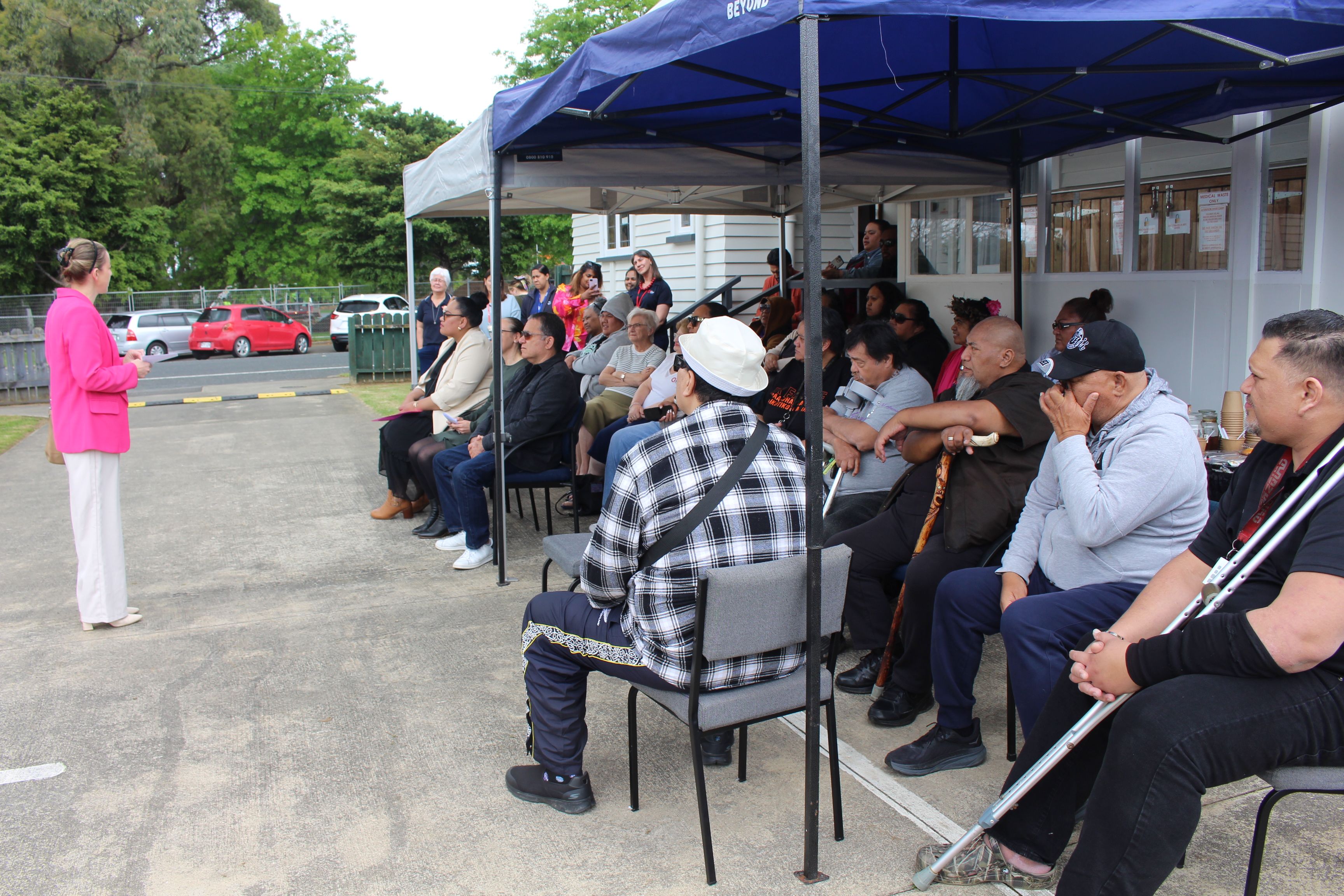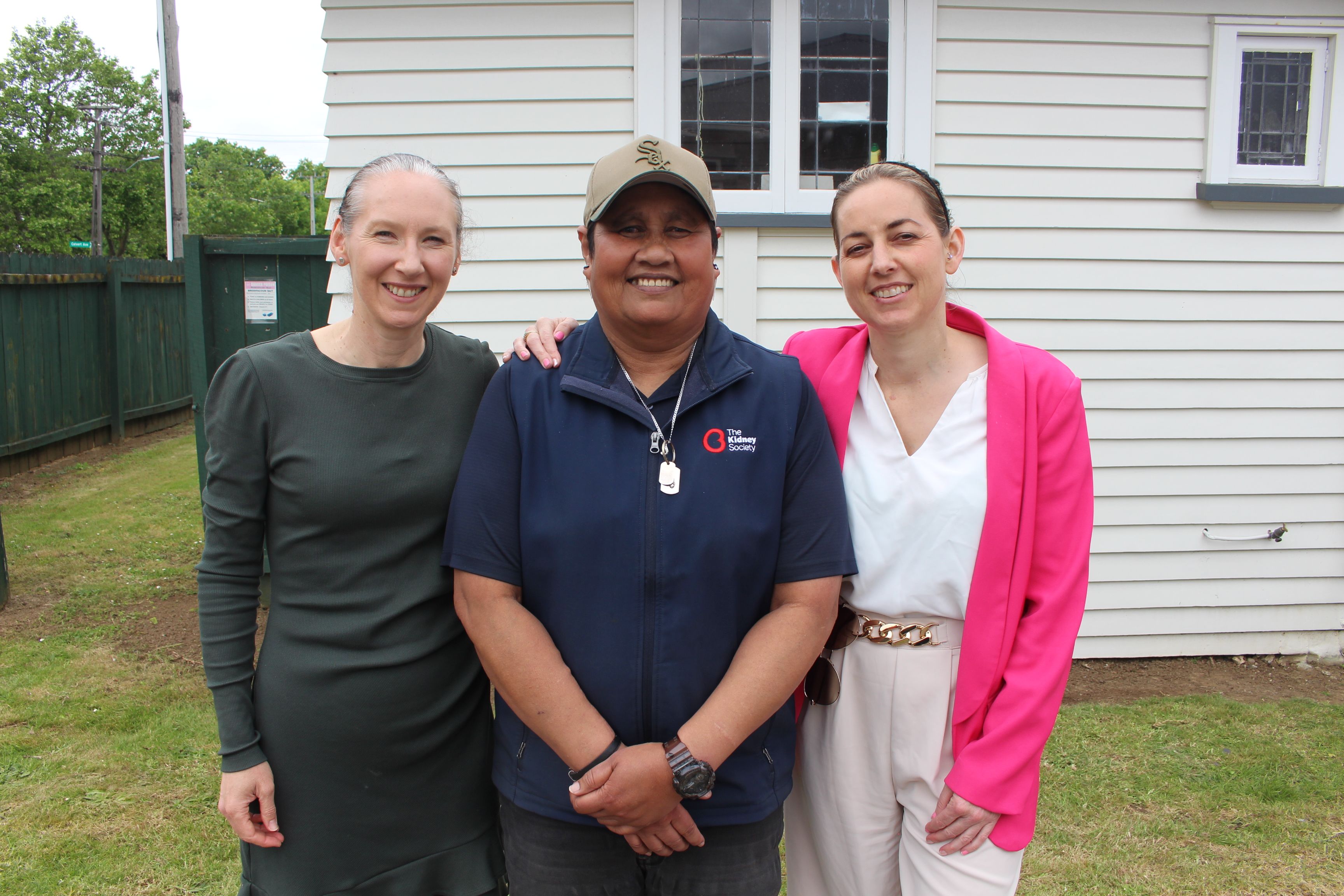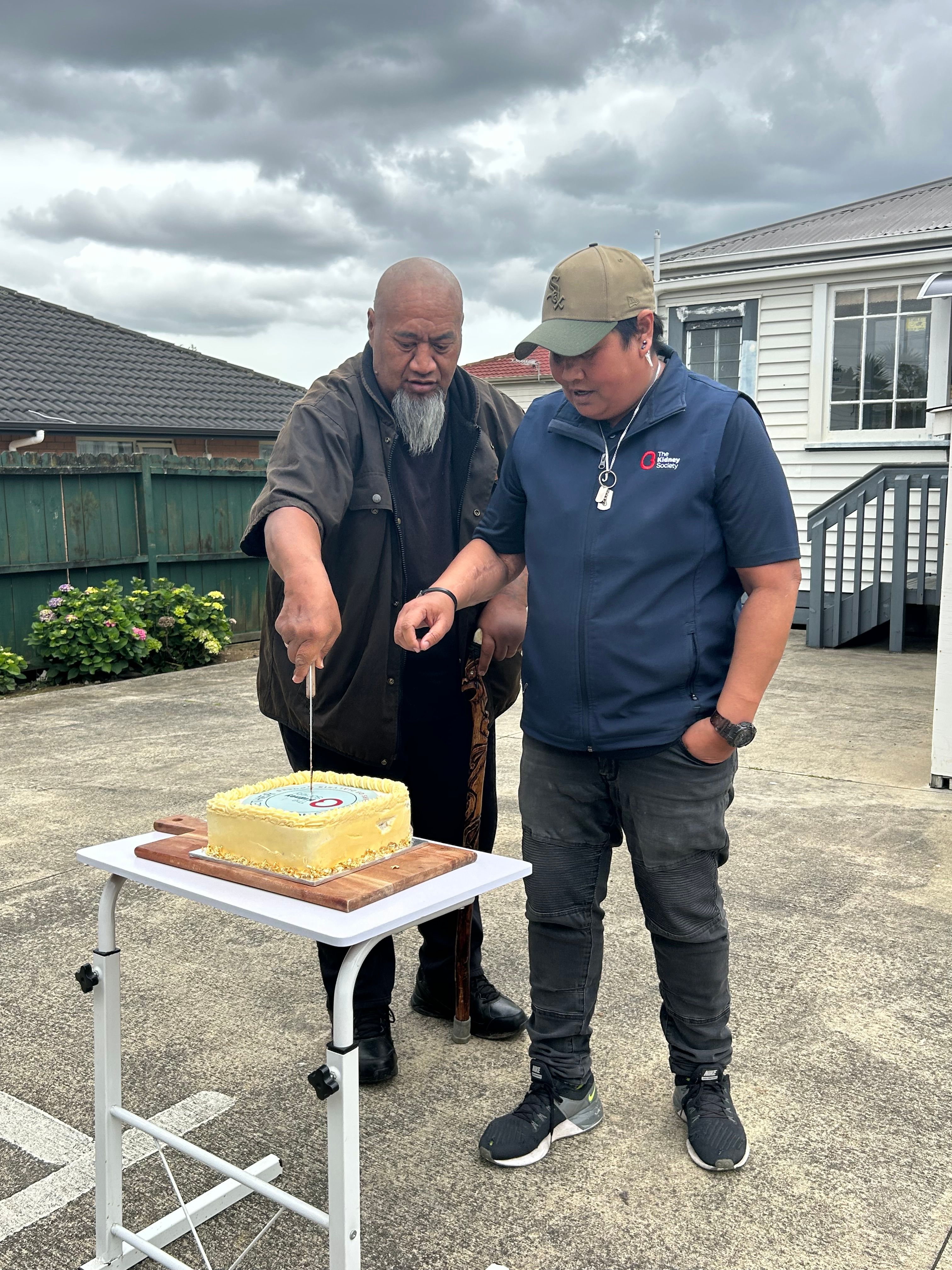

From left: William Ropata, Kidney Society chief executive Kath Eastwood, Sally Fox from Te Whatu Ora, client Mama Francis, Fitz 275, and Jenny Ili at the 21-year celebration at Wallace House, Māngere East.
Photo/supplied
‘It's homelier than a hospital': How a dialysis model is saving lives and millions of dollars
A partnership between Health NZ and The Kidney Society is reshaping care by bringing treatment into communities. But its future depends on continued government support.




Heading off on a roadie? Here’s how to keep your car and whānau safe




Heading off on a roadie? Here’s how to keep your car and whānau safe
A world-first South Auckland dialysis model is being praised for saving lives, restoring dignity, and easing pressure on Middlemore Hospital, but its future growth depends on Government backing.
More than 235 South Aucklanders have already been helped by dialysing close to home instead of travelling to hospital.
The Kidney Society’s (TKS) three community dialysis houses have proved so successful that Te Whatu Ora is considering opening a fourth.
But the number needing help is expected to grow, with the dialysis population forecast to increase by about 30 per cent in the next decade.
The three TKS facilities, run in partnership with Te Whatu Ora Counties Manukau, allow trained patients to manage their own dialysis at flexible hours, typically three to five times a week.
Dr Chris Hood, clinical director of medicine at Te Whatu Ora Counties Manukau, say the facilities are meeting current demand but will soon need to expand.

Kidney Society board chair Chantelle Good addresses patients, staff, and the community during the 21-year celebration. Photo/PMN News/Candice Ama
“They’re not full. They’re filling up. So we’re thinking about getting a fourth.”
Last month, TKS hosted a community celebration marking 21 years of its dialysis houses.
Savele ‘Fitz’ Refiti, who began dialysis in 2014, says the flexible hours changed his life.
“With these houses you get flexibility … you could come at midnight or 10 o’clock … and then in the morning you can go to work,” he says. “It just feels homelier than a hospital.”
Hood says the houses were designed for patients who can safely manage treatment after a short training period.

A dialysis chair and machine inside one of the Kidney Society’s community houses in South Auckland, where patients can manage their own treatment. Photo/PMN News/Candice Ama
“It takes somewhere between eight and 12 weeks to train somebody to do their dialysis,” he says. “Which is about 10 to 15 per cent of all dialysis patients at most.”
South Auckland remains the only region with three dedicated community houses run in partnership with Te Whatu Ora.
“Hospitals can’t really do that … but if we team up with a charity, then the charity might be able to provide the facility."
“This was a world first when it happened,” Hood says of the model's success.
The first community dialysis house opened in Papatoetoe in 2004, becoming the first renal facility in the country to operate without medical staff present.
Two more houses followed in Māngere East, giving South Auckland a total of 28 dialysis chairs serving up to 55 people.
Kath Eastwood, chief executive of TKS, says the houses were built on a simple belief.
“We’ve always believed that home is best for people who can dialyse independently.

Kath Eastwood, Jenny Ili, and Chantelle Good celebrate 21 years of the Kidney Society helping patients dialyse in the community. Photo/PMN News/Candice Ama.
She says community dialysis costs roughly half as much as hospital treatment and delivers better outcomes.
“People have much better outcomes when they have the flexibility to dialyse when they want.”
The model is particularly valuable for Māori and Pacific patients who often face barriers such as housing insecurity and travel costs.
“Our dialysis population is forecast to grow about 30 per cent in the next decade,” she says. “Establishing more of them will require more local and central government support.”

William Ropata and Jenny Ili cut the 21-year celebration cake. Photo/supplied
Lou, whose father dialyses at one of the Māngere East houses, says the journey tested their family.
“His biggest fear in training was needles… With encouragement and support, Dad was able to go through it."
She values the safety of the homes, saying, “If anything happens, you just press the button and someone responds”.
Chantelle Good, chair of the TKS, says the partnership with Te Whatu Ora has delivered proven results.
“[We've] saved the taxpayer about $92 million by being able to dialyse in the houses rather than the hospital because we do it a lot cheaper than the hospital does.”
She says Māori and Pacific people make up a significant share of those receiving dialysis.
“I think it’s about 50 - 60 per cent, a high percentage of dialysis patients that are Māori and Pasifika."
According to TKS figures, community dialysis has saved the health system an estimated $130 million since 2004.
She says the next goal is a fourth facility in Counties Manukau to meet growing demand.

Close-up of a dialysis machine used in the Kidney Society’s community houses, allowing patients to dialyse independently. Photo/PMN News/Candice Ama
“If you empower communities, they can solve their own problems. TKS has always been about that.
"We walk alongside people and really enable them to live their best lives. What we want is support to be able to establish more houses like this in other parts of the country.”
LDR is local body journalism co-funded by RNZ and NZ On Air.
